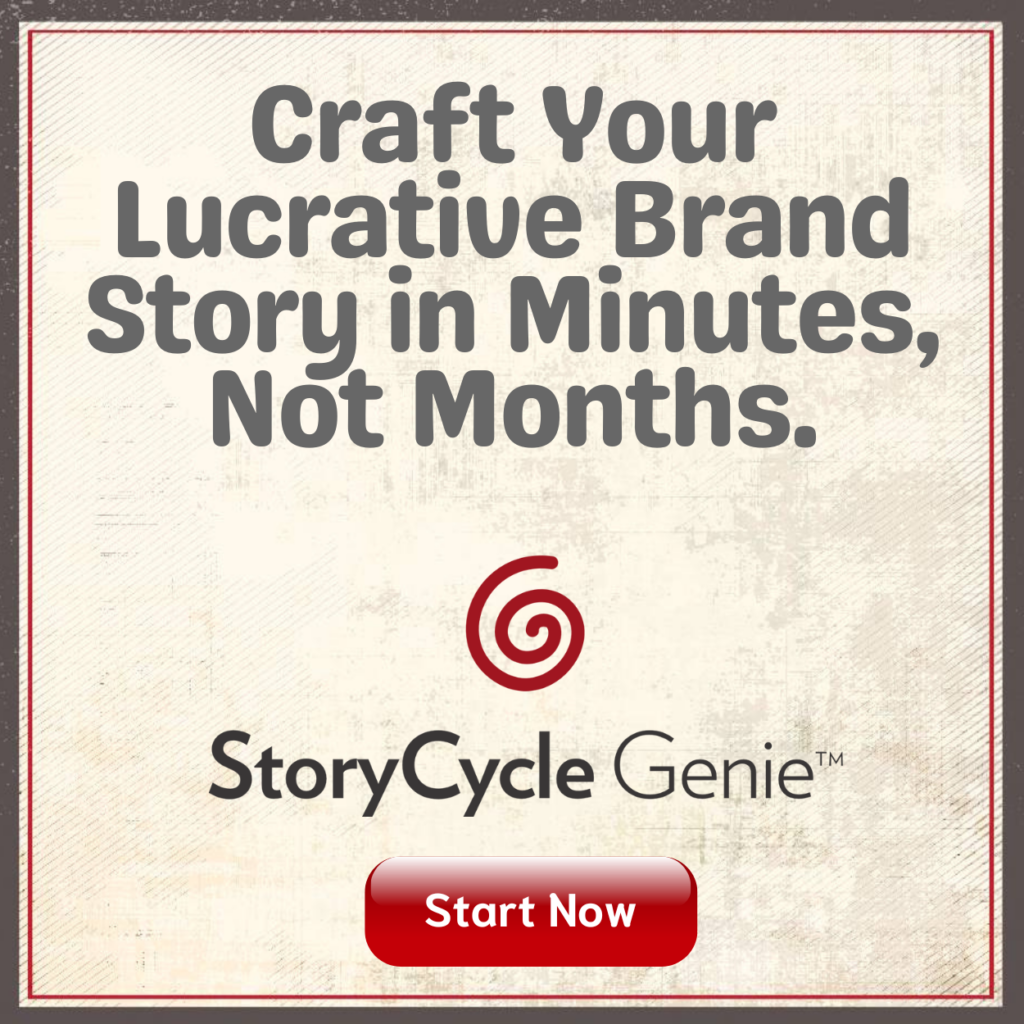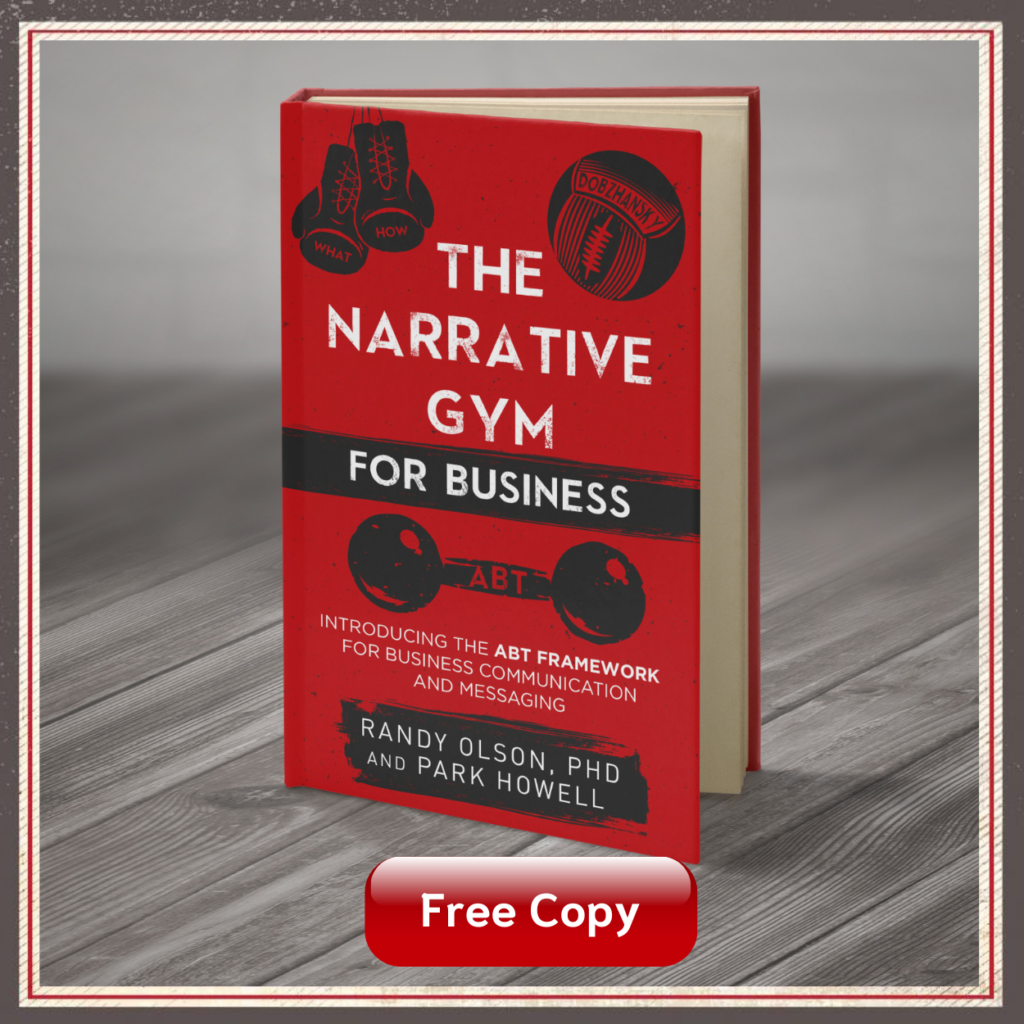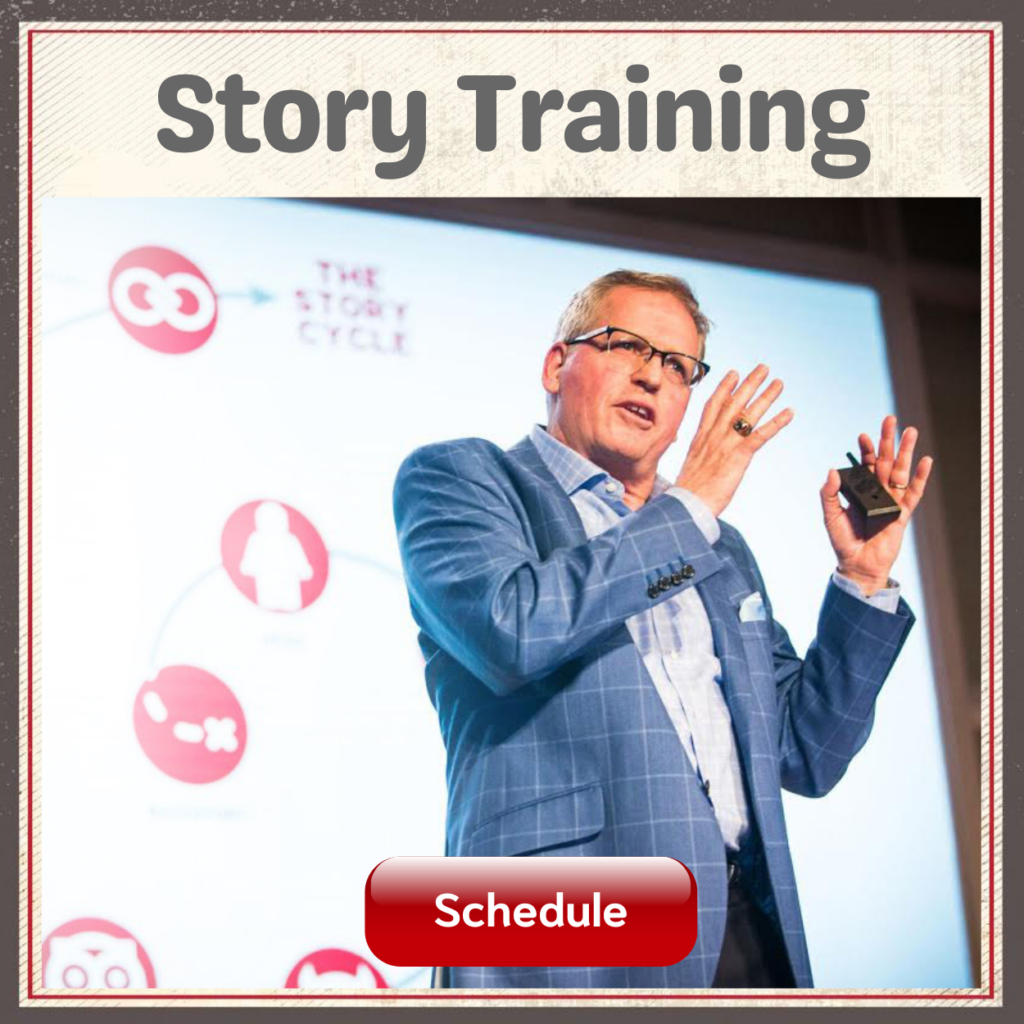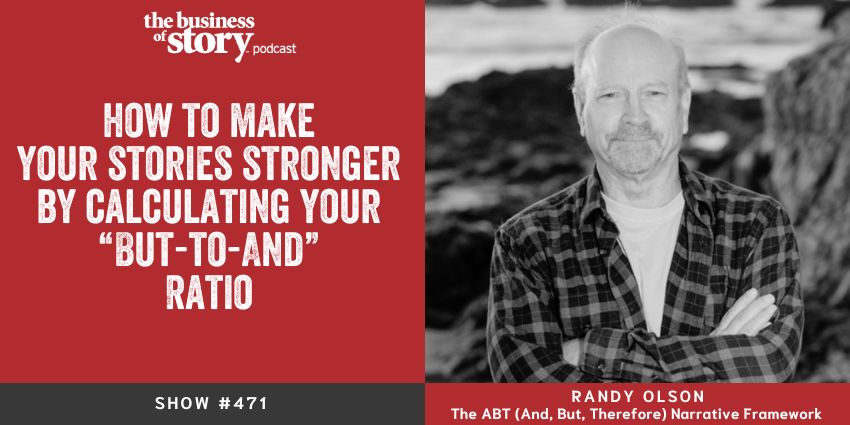
#471: How to Make Your Stories Stronger by Calculating Your “But-to-And” Ratio
Leonardo da Vinci said, “Simplicity is the ultimate sophistication.”
Albert Einstein said, “The definition of genius is taking the complex and making it simple,’”
But in the business world, we tend to over-complicate everything.
Especially our communications.
We find ourselves in “And Land.” And, and, and’ing our audiences to death-by-boredom.
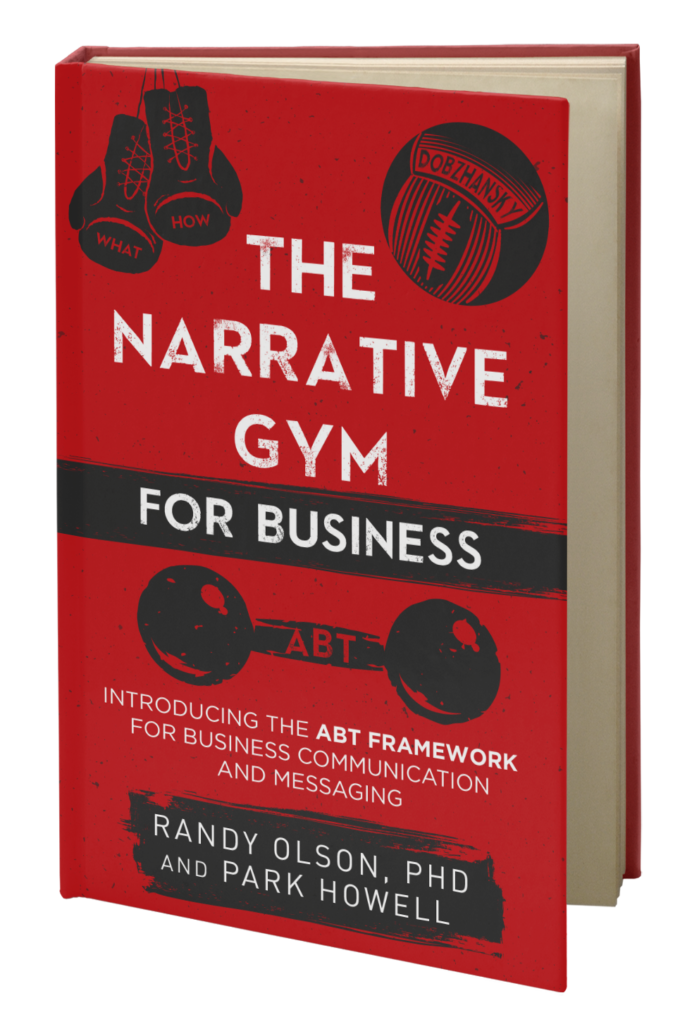 Now you can test how clear, concise and compelling your communication is by using a tool developed by today’s guest, Dr. Randy Olson, my co-author of The Narrative Gym for Business.
Now you can test how clear, concise and compelling your communication is by using a tool developed by today’s guest, Dr. Randy Olson, my co-author of The Narrative Gym for Business.
If you don’t know Randy, he is a Harvard Evolutionary Biologist turned filmmaker, author and teacher of the ABT (And, But, Therefores) narrative framework.
For the past eight years, Randy has been using a tool called The Narrative Index to quantify the power of a particular communication by measuring the “But-to-And” ratio in its content.
He developed it to prove the power of the ABT in speeches dating back decades.
The higher the score (meaning replacing “ands” with “buts” and “therefore” to propel the narrative forward) the more compelling the communication is compared to thousands of competing speeches, articles, and presentations.
Randy and I have been coaching and teaching the ABT for well over a decade.
While tens of thousands of business and science leaders have been using the ABT to become more concise, clear, compelling and persuasive, we still hit up against some passive and active brick walls.
In fact, I just wrote a post titled “10 Reasons Why You Should NEVER Use the ABT Story Structure,” which outlines both the passive and active aggression against the ABT.
Passive aggression is when people say “Oh, thanks. It’s just three words. I got it. I don’t have time to really give it any more thought.”
Active aggression is when they say things like, “I can never use this bull sh!t.” Or, “The ABT is reductive and insulting.“
I think people push back on the ABT because they think it’s woo-woo, that you can’t actually measure and quantify its impact in communications.
If that’s you, the non-believer, then this show is for you.
And if you already believe in the ABT and have seen it work, then the Narrative Index tool will help you become even stronger with your communications and storytelling.
Takeaways:
- How to use the Narrative Index to make sure your stories, messaging and presentations are compelling.
- The “But-to-And” ratio is a metric that measures the quality of storytelling, with higher ratios indicating better storytelling.
- Contradiction is a key element in activating the brain and capturing attention in storytelling.
- The words ‘but’ and ‘therefore’ play important roles in shaping narrative structure.
- Replacing the ‘and, and, and’ structure with the ‘but, and, therefore’ structure creates engaging stories that lead to a clear and compelling journey.
- Simplicity and brevity are key elements of effective communication.
Chapters:
- 00:00 Introduction and Musical Accompaniment
- 02:19 The ABT in the Making of South Park
- 05:11 The ABT as a Focusing Tool
- 06:54 The ABT and the Business of Story
- 08:37 The Power of Simplicity in Narrative Structure
- 10:31 The Importance of ‘But’ and ‘Therefore’
- 13:13 Quantifying the Impact of the ABT
- 15:05 Applying the ABT in Organizations
- 19:23 Overcoming Brick Walls and Propagating the ABT
- 23:39 The Challenge of Effort in Implementing the ABT
- 26:32 The Power of Narrative Structure
- 29:21 Replacing the ‘And, And, And’ Structure
- 32:54 The Impact of the ‘And’ Frequency
- 35:06 The Importance of Narrative Intuition
- 39:07 The Challenge of Embracing the ABT Model
- 46:40 Simplicity and Brevity in Communication
Links:
- The ABT Project
- Randy Olson on X
- The Narrative Gym for Business
- The ABTs of Storytelling online micro-training course
- 10 Reasons Why You Should NEVER Use the ABT Story Structure
Popular Related Episodes You’ll Love:
- #318: The One Narrative Framework You Need for Effective Business Storytelling with Randy Olson
- #341: How to Persuade a Judge and Jury Using the ABT with Doug Passon
- #400: Learn From My 10-Year Journey With the ABTs of Storytelling with Park Howell
Your Storytelling Resources:
Connect with me:
- Instagram: https://www.instagram.com/parkhowell/
- Facebook: https://www.facebook.com/groups/BusinessOfStory
- YouTube: https://www.youtube.com/channel/UC0ssjBuBiQjG9PHRgq4Fu6A
- Twitter: https://twitter.com/ParkHowell
- LinkedIn: https://www.linkedin.com/in/parkhowell/
- Website: https://businessofstory.com/abt/
#StoryOn
 Listen To More Episodes
Listen To More Episodes




